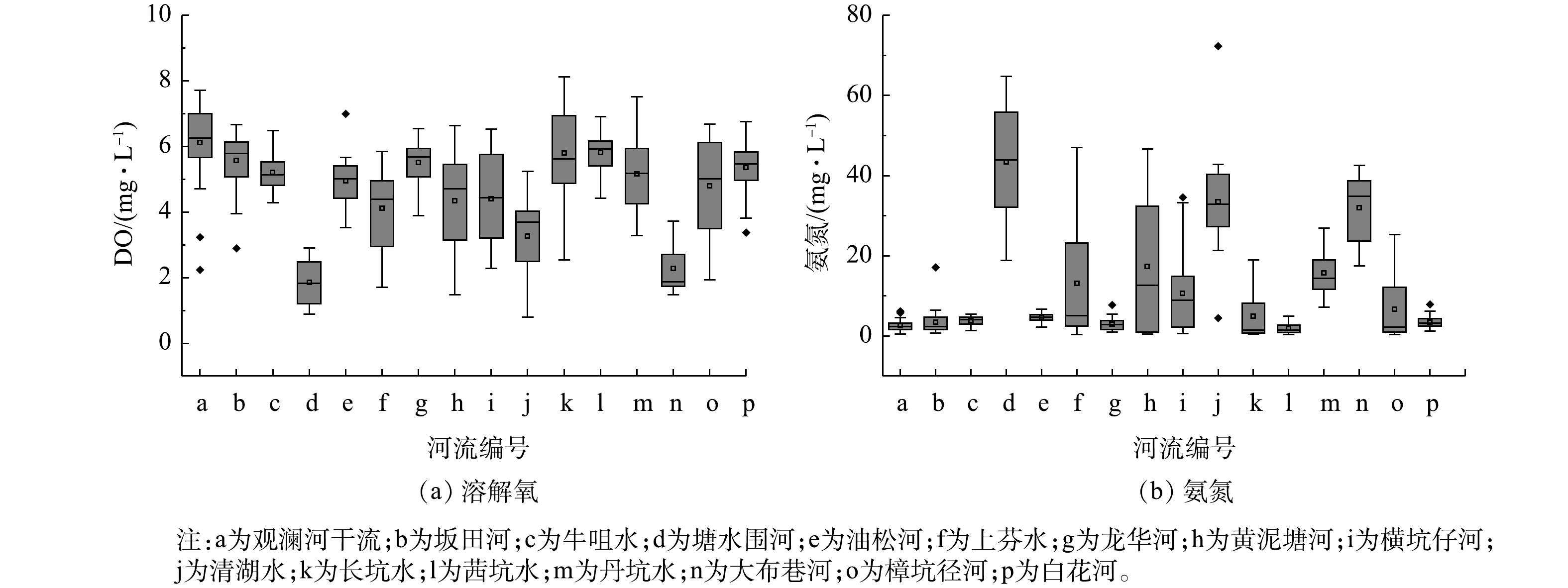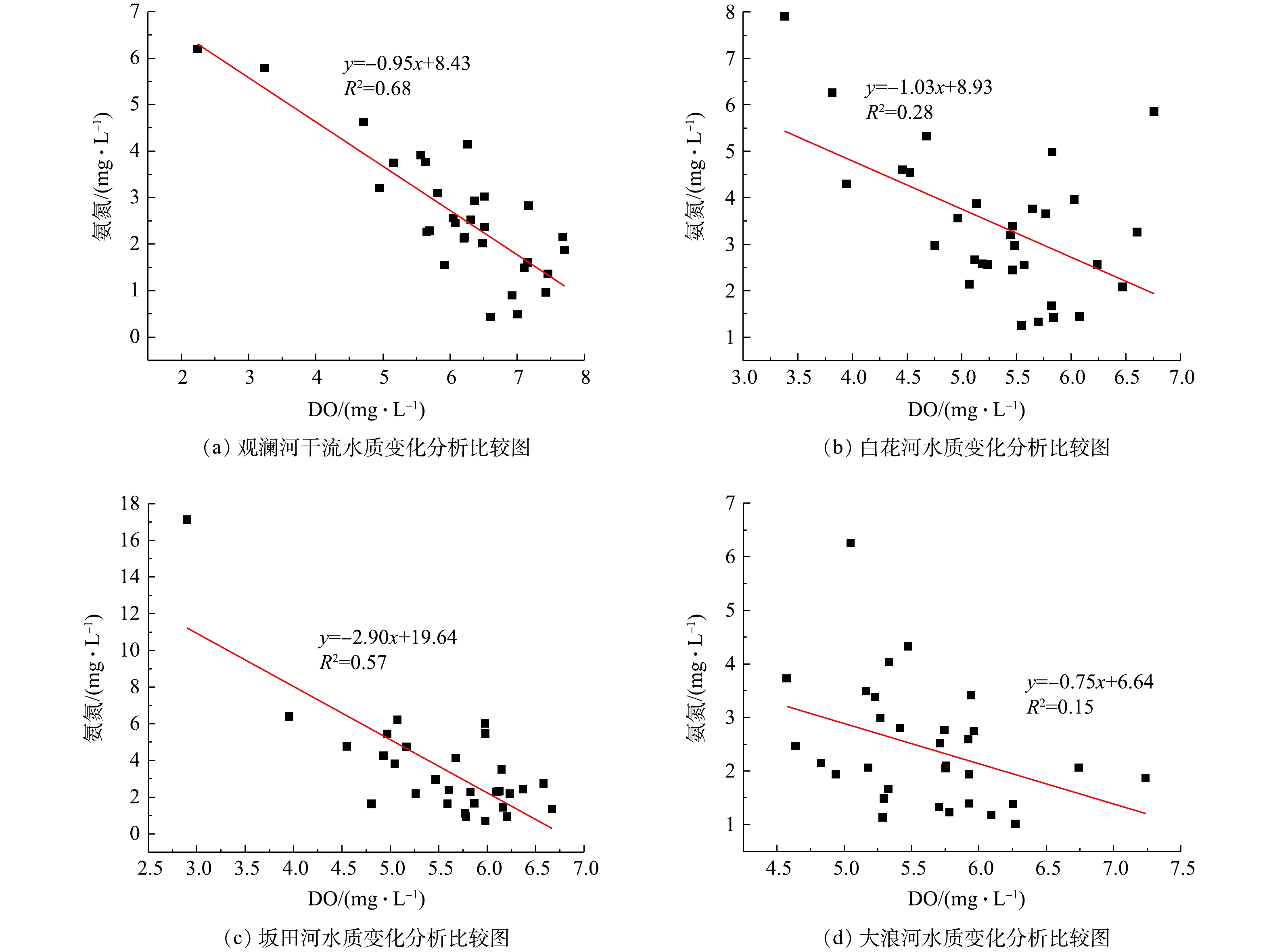镉在方斑东风螺组织内的蓄积及镉的毒性:水相暴露与食物相暴露比较
Toxicity of Cadmium and Its Bioaccumulation in Spotted Babylon, Babylonia areolata:Comparison between Effects of Waterborne and Dietary Exposure
-
摘要: 为比较直接经水体与经营养传递的2种镉(cadmium,Cd)暴露方式对方斑东风螺(Babylonia areolata)不同组织Cd蓄积和毒性的差异,采用室内模拟法,将螺暴露于含Cd水体(Cd2+:100 μg·L-1)或喂食含Cd饵料(牡蛎,34.56 μg·g-1以干质量计,先经水体100 μg·L-1 Cd2+暴露达平衡)30 d后再进行15 d净化。结果显示,暴露期间,除食物相组螺胃肠道Cd浓度在第10天极显著高于对照组,但随后迅速下降外,其他各组织在2种途径及胃肠道在水相暴露时Cd的浓度均逐渐上升,暴露30 d后肝胰脏中Cd浓度最高;净化期,螺鳃中Cd排出率较高,胃肠道与肝胰脏的排出率较低,至净化期末除食物相组鳃中Cd浓度与对照组无显著差异外,2种处理中其他各组织Cd浓度仍显著高于对照组。2种暴露途径中金属硫蛋白(metallothionein,MT)浓度仅在螺肝胰脏中逐渐增加,且与Cd的蓄积呈显著线性正相关。与食物相组相比,水相Cd暴露引起螺肝胰脏脂质过氧化水平(lipid peroxidation,LPO)更高,且内脏团中Cd与其亚细胞成分的金属敏感组分结合的百分比也更高。结果表明,Cd通过营养传递对螺产生的毒性较水体直接暴露低,但摄食是螺蓄积Cd的主要途径;净化后除鳃外水相暴露组螺各组织Cd的排出率较低;因此为了健康养殖与食用安全,东风螺工厂化养成时对饵料与水体Cd浓度的监测均应引起足够的重视。Abstract: The effects of waterborne and dietary cadmium (Cd) exposure on bioaccumulation and toxicity in tissues of the Babylonia areolata juveniles were investigated. The snails were exposed to aqueous Cd (100 μg·L-1Cd2+) directly or fed with Cd pre-exposed oysters (Saccostrea cucullata) for 30 d. Cd concentration of the oysters was 34.56 μg·g-1(dry mass) after being exposed to waterborne Cd (100 μg·L-1 Cd2+) for 14 d, then the snails of the two treatments were depurated for another 15 d. The results indicated that the concentrations of Cd increased with increasing exposure time in all tissues except for the gastrointestinal tract of the dietary group, which decreased gradually after peaked at the 10 th day. The maximal values of Cd accumulated of the two treatments were both in hepatopancreas after 30 d exposure. After depuration, the efflux rates in gill were higher than those in gastrointestinal tract and hepatopancreas. Cd concentrations in different tissues were still significantly higher than that of the control group except for that in gill of the dietary group. The metallothionein (MT) concentrations of the two treatments increased gradually only in hepatopancreas, which was positively correlated to the amount of the accumulated Cd. Comparedly, the toxicity to the snails after exposure to waterborne Cd was stronger than that after exposure to dietary Cd as more MDA contents produced in hepatopancreas and higher percentages of Cd distribution in metal sensitive fractions of the viscera. The snails accumulated Cd mainly from the diet. The depuration rates of tissues in the aqueous Cd group were lower than those in the dietary Cd group except for that of the gill. Therefore, much attention should be paid to monitor Cd concentrations of the diets and water when the snails were cultured with highdensity in factory.
-
城市范围内的河流、湖泊及其他景观水体,担负着提供水资源、发挥生态效应、承载城市生活等多种功能[1-2]。2015年,国务院正式出台《水污染防治行动计划》(简称“水十条”),将城市黑臭水体整治作为重要内容,全面控制污染物排放,并提出明确要求:加大黑臭水体治理力度,于2020年底前完成地级及以上城市建成区黑臭水体均控制在10%以内的治理目标[3-5]。
城市河流黑臭水体是呈现令人不悦或散发不适气味水体的统称,是河流水体受污染的一种极端现象[6-8]。尤其对于南方城市河流,河流类型多为中小型河流,环境容量小,容易受到污染,且呈现以城市为中心的污染特点。污水主要来源为生活污水,以有机污染物质和细菌污染为主,可生化性较好,重金属及其他难降解的有毒有害污染质一般不超标。河流污水主要污染物指标BOD5、COD、SS值比北方城市河流污水稍低,其原因在于南北方居民生活习惯的差异[9-10]。针对黑臭水体治理,目前普遍采用控源截污、清淤疏浚和生态修复等治理手段,治理成效显著,黑臭水体数量大幅度减少,河流水质明显改善。
本研究以南方城市深圳市的观澜河流域(龙华区段)为研究对象,通过对观澜河龙华区段干支流河流年际水质变化进行监测分析,结合该河段的治理工程措施,评估黑臭水体治理成效,总结工程治理措施及实施成效,以期为城市河流水质改善和水环境提升提供参考。
1. 区域概况
1.1 研究区域概况
观澜河流域位于深圳市中北部,发源于龙华区民治街道大脑壳山(见图1),自南向北贯穿整个龙华区。河流部分支流分布于龙岗区西南部,光明区东南角,干流在观澜企坪以北汇入东莞市境内石马河,属东江水系一级支流石马河的上游段。观澜河流域(龙华区段)面积为175.58 km2,流域内积雨面积1.0 km2及以上河流有34条,其中龙华区内有19条。
观澜河流域(龙华区段)内共有干支流24条,其中干流1条,独立河流2条(君子布河、牛湖水),一级支流14条,二、三级支流7条。各水体均为雨源性河流,根据对观澜河流域内各降雨站点多年降雨系列的分析,多年平均降雨量为1 606 mm。降雨年际变化较大,最大年降雨量2 080 mm,最小年降雨量780 mm;降雨年内分配极不均匀,汛期(4—9月份)降雨量大且集中,约占全年降雨总量的80%,并且降雨强度大,多以暴雨形式出现,极易形成洪涝地质灾害。
1.2 样品采集与分析
1)调研对象。观澜河流域(龙华区段)干支流共计24条;通过查阅当地相关资料和结合现场踏察发现岗头河已为干涸状态,仅作为泄洪渠道;其余23条干支流均为本次研究对象,分别为观澜河干流、白花河、大水坑河、牛湖水、君子布河、樟坑径河、横坑水、大布巷河、丹坑水、茜坑水、长坑水、清湖水、横坑仔河、黄泥塘河、龙华河、大浪河、冷水坑河、高峰水、上芬水、坂田河、油松河、塘水围河、牛咀水。经统计,河道长度合计106.44 km。
2)调研方法。参照《水质 采样方案设计技术规定》(HJ 495-2009)结合现场情况按照科学有效的布点原则,充分考虑河段取水口、排污口数量和分布及污染物排放状况、水文及河道地形、支流汇入及水工程情况、植被与水土流失情况、其他影响水质及其均匀程度的因素等。污染严重的河段可根据污水口分布及排污状况,设置若干控制断面,控制的排污量不得小于本河段总量的80%。
3)样品采集。根据观澜河流域特征,选择水流相对缓慢平直的节点区域设置采样点。从观澜河上游到下游的顺序,每条支流从上游到下游的采样点位顺序,以每条河的前2个字母为样点代号依次命名,共定位176个点位。水质数据采集时间是从2017年11月—2020年5月,采样频次为每周1次。水样共分4瓶,采集的水样储存于提前加入HgCl2的250 mL塑料样品中,以抑制微生物的氧化分解,用于测定水样中的氨氮(NH3-N)含量;同时,现场采用多功能水质检测仪(HQ43d,德国WTW)测定水温T、溶解氧DO和pH;对每个采样点处的水样利用ULTRAMETERⅡ 6PFC型号的便携式水质分析仪对其氧化还原电位(oxidation-reduction potential)进行准确测定;并对每个采样点处的水质透明度运用塞氏盘法进行测定。每次水样采集完毕后快速置于4 ℃的车载冰箱中进行冷藏保存。
4)数据处理。采用纳氏试剂分光光度法测定(HJ 535-2009)NH3-N。测定原理是碘化汞和碘化钾的碱性溶液与氨反应生成淡黄棕色胶态化合物,其色度与氨氮含量成正比,通常可在波长410~425 mm内测其吸光度,计算其含量。水样经过0.45 μm尼龙膜过滤后留滤液(空白和标曲不需要过滤),依据稀释倍数取样,加入到哈希管,用无氨水加至总体积为10 mL。加0.2 mL酒石酸钾钠溶液,混匀。加0.3 mL纳氏试剂,混匀。放置10 min后,在波长420 mm处,用光程10 mm比色皿,以无氨水为参比,测定吸光度。
1.3 黑臭水体基本情况
黑臭水体治理措施实施之前,观澜河流域(龙华区段)河流黑臭严重。流域内22条河流全部为黑臭河流,其中重度黑臭河流有坂田河、长坑水、大水坑河、牛湖水、清湖水、大布巷河、丹坑水、塘水围河、上芬水、高峰水、横坑水、横坑仔河、黄泥塘河和樟坑径河等14条支流,河流水质差,DO平均值为5.63 mg·L−1,氨氮平均值为22.86 mg·L−1,黑臭长度62.04 km,黑臭面积1.226 km2,感官黑色,有明显臭味,河面漂浮物较多,沿途排污口较多;轻度黑臭河流有白花河、牛咀水、茜坑水、油松河、冷水坑河、君子布河、龙华河和大浪河等8条支流,河流水质较差,DO平均值为4.27 mg·L−1,氨氮平均值为8.01 mg·L−1,黑臭长度7.05 km,黑臭面积0.051 km2,河流沿岸也存在污水直排口,数量较少,但仍有明显黑臭现象。
氨氮是影响我国地表水水环境质量的首要指标[11]。相关参考资料显示,观澜河流域(龙华区段)水量总计约9.2×105 m3·d−1,由式(1)计算得出观澜河流域(龙华区段)黑臭水体治理之前,水体中氨氮含量总负荷为14.20 t·d−1。
W=C×Q (1) 式中:W为氨氮含量负荷,t
⋅d−1 ⋅L−1 ⋅d−1 1.4 黑臭原因解析
1)外源污染输入量大,污染负荷重。造成水体黑臭的主要原因分为外源污染物质输入、内源隐性污染和水生态退化严重。外源污染是水体黑臭的重要原因之一,主要为城市人口密集,城中存在众多散乱污小作坊偷排污水,并且市政管网系统不健全,污水处理能力严重不足[12]。当地提供的勘察资料显示,观澜河流域(龙华区段)入河污水排口共计533个,管径最大有2 000 mm,主要为居民生活污水,水量少,但污染物浓度较高。当地有关部门资料显示,2017年观澜河流域(龙华区段)沿岸排扣污水直排入河现象严重,排污量大,大部分排放入河的污水均为生活污水,观澜河流域(龙华区段)年排口入河污水量达8.196 57
×107 2)河道存在隐性污染,内源污染问题突出。内源污染通常指的是水中底泥释放的污染物不断污染水体,使水体富营养化,并含有一些有毒有害物质,污染物厌氧发酵产生的甲烷和氮气导致底泥上浮造成水体黑臭[13]。当地提供的勘察资料得出,观澜河流域(龙华区段)的河道纵坡较大,底泥淤积量相对较少,总河道底泥量约为20×104 m3,且底泥中的pH平均值为7.83,最大值为8.45,最小值为7.22,有机质质量含量为0.08%~16.2%,部分河段Cu浓度高达422~500 mg
⋅kg−1 ⋅kg−1 3)河流水生态退化严重,流域水环境容量低。观澜河流域(龙华区段)内建设开发强度高,开发利用超50%,自然河流属性退化;干流滨河生态空间不足,支流人工渠道化;流域蓝绿生态空间为42.6%,水域所占比重仅为4.25%,生态安全保障低、服务能力差。
水环境容量是指在流域系统内,在不影响流域水质、水生态等水环境的情况下,流域水体所能容纳污染物的最大量,具体计算方法见式(2)。
W=W稀释+W自净=0.001Q(Cj−C0)+0.001KVCj (2) 当Cj<
C0 W=W自净=0.001KVCj (3) 式中:W为观澜河留水环境容量,kg
⋅d−1 ⋅d−1 ⋅L−1 ⋅L−1 采用式(1)和式(2)计算观澜河流域水环境容量得到观澜河流域旱季水环境容量氨氮容量为0.072 t
⋅d−1 2. 工程治理措施
2.1 总体治理思路
根据上述问题分析,流域内水质改善工程治理从以下3个方面开展:1)针对城中村散乱污小作坊偷排漏排、市政基础设施不健全等外源污染问题,通过实施正本清源、雨污分流、管网提质增效、污水处理厂提标改造等工程措施,彻底切断污水来源;2)针对河道黑臭底泥淤积等内源污染问题,开展河道清淤工程措施,实现污染物的永久去除;3)针对流域水生态退化问题,开展碧道建设和生态补水工程措施,提高流域水环境容量。
2.2 工程治理措施
1)外源截污措施。①雨污分流工程。对原有排水管网实施雨、污分流制改造,现状合流管可保留使用的改作雨水管,同时新增一条污水管,以达到雨、污分流的目的,龙华区雨污分流工程共实施了5期,完成973 km的雨污分流管网建设。②正本清源工程。主要分为污染源调查、现状排水系统梳理、建筑排水小区调研等,根据不同类型小区排水管网的特征,结合实际制定不同的设计方案,先已完成正本清源工程7个批次,共完成2 032个小区的正本清源改造。③管网提质增效工程。重点开展干管修复,解决市政高水位运行、淤堵等问题,并全面覆盖正本清源工程所遗漏的小区,实现龙华区管网全覆盖,保证污水处理厂进水浓度合格,同时协助解决暴雨积水点和雨天溢流等问题,实现污染全面防治。④污水处理设施提标改造工程。修建了8座临时污水处理设施,处理沿河截污管道收集的生活污水,污水处理能力为2.05
×105m3⋅d−1 ×105m3⋅d−1 .0×104 外源治理共计整治污水直排口547个,截留直排污水8 196.57×104 t,完成973 km的雨污分流管网建设,完成2 032个小区的正本清源改造,城市污水收集率达83%,完成氨氮负荷削减8 720.88 t。
2)内源治理措施。内源治理技术是指通过打捞、净化等途径使水体中的垃圾、淤泥等污染物得以清除,实现河流水质改善[14-16]。实施了清淤疏浚措施,主要采用的是机械清淤的方式(小型装载机外形尺寸5.45 m×1.96 m×2.52 m),对全流域23条支流进行清淤,底泥被运往处理中心进行集中处理。同时,对全区83段22.31 km暗涵实施清淤、总口截污、揭盖复涌工作,分别在暗涵段出口处新建高约30 cm的截污挡墙,截流暗涵内污水。共计清理底泥93 077 m3,削减氨氮污染负荷2 180.22 t,有效的清除了河道中隐性的污染源。
3)流域生态化改造措施。①河道生态化改造,恢复滨河生态空间。结合流域蓝线管控,以河岸带人工干扰程度40%以下为目标,拆除了河道违建并逐步拓宽滨岸带,在位于人民路-环观南路地段,开展了1.3 km碧道建设,沿岸新建主题公园,依托现有体育馆等建筑,打造了特色滨水跑道。②综合利用多种水源,保障河道生态基流。当地积极运用活水循环技术,通过向黑臭水体中加入洁净水的方式[17],即生态补水工程,通过新建补水管道和提升泵站的方式进行河流生态补水,补水工程实施2期,共新建DN300~DN1200的补水管道61.07 km管道,6座提升泵站,总规模为4.5
×105t⋅d−1 3. 治理成效分析
通过上述工程措施的实施,极大地改善了观澜河(龙华区段)河流水系的水环境状况。外源治理措施和内源治理措施降低了河流上覆水的污染负荷,河流生态化改造措施提高了河流自净能力。在时间尺度上,治理后(2020年)的监测数据表明,氨氮和DO在流域范围内得到较大改善,已实现全面“消黑”;在空间分布上,除塘水围、上芬水、大布巷等支流氨氮超过地表水环境质量Ⅴ标准类外,其余干支流均能满足地表水环境质量Ⅴ标准。
3.1 在时间尺度上的水质改善情况
1)河流水质年际变化趋势。观澜河流域水文气候独特,汛期降雨量充沛、雨天水量大而急、季节性水量差异明显等。选取DO和氨氮作为典型指标[18]进行评价分析。图2(a)和图2(b)分别为观澜河流域(龙华区段)黑臭水体治理之前DO、氨氮含量分布图,可知流域DO含量平均值为4.95 mg·L−1,各种浮游生物即不能生存[19-22],各条河流DO含量基本大于2.0 mg·L−1,有个别河段如坂田河、大水坑河、横坑水、樟坑径河存在局部DO含量小于2.0 mg·L−1,其中横坑仔河全河段DO含量小于2.0 mg·L−1,为流域内DO含量最低的河流,整条河段水体也为缺氧状态;而氨氮含量平均值高达15.44 mg·L−1,其剧烈的毒性直接导致河流水体中水生生物的死亡,严重破坏水环境生物链[23-24],表明观澜河流域(龙华区段)河流水生态是基本丧失的。全流域所有河流均为达黑臭水体标准,即氨氮含量大于8.0 mg·L−1,且坂田河、长坑水、大水坑河等14条河流氨氮含量大于15.0 mg·L−1,水质恶化非常严重。通过增设河道跌水设施,对河流水体进行“充氧”,实施控源截污措施,将直排入河的生活污水引入市政管网,使得入河污染负荷减少,并且对河道进行了清淤疏浚工作,将河道内污染物质彻底清理,流域内水质因此得到大幅度提升。如图3(a)所示,流域内各河流DO含量均符合黑臭标准,且DO含量平均值达5.78 mg·L−1,基本满足水体中浮游生物、鱼类、好氧微生物等的生存条件,且长坑水2020年5月DO含量为8.13 mg·L−1,则可划分为清洁河流水准;且图3(b)中氨氮含量已稳步下降,均低于国家黑臭水体标准值(8.0 mg·L−1),且流域内氨氮含量平均值降至1.81 mg·L−1,氨氮污染负荷减少了10 901.1 t,实现全流域黑臭水体的全面消除。其中,观澜河流域各条河流DO和氨氮年际变化趋势见图4和图5。
2)河流水质年内变化趋势分析。观澜河流域属南亚热带海洋性季风气候区,降雨年内分配极不均匀,即导致河流水质年内变化幅度较大(见图6)。总体来看,流域内河流汛期DO含量整体高于非汛期,汛期流域内河流氨氮含量整体高于非汛期。河流水质受水量、点源与非点源污染共同作用的影响,非汛期水质主要反映点源污染情况,而汛期则主要反映面源污染和稀释作用的影响[25]。图中数据可知,汛期该流域水质整体受水量增大的影响程度低于面源污染所带来的影响,如黄泥塘河汛期氨氮含量(21.39 mg·L−1)为非汛期氨氮值(13.35 mg·L−1)的1.6倍,其原因在于汛期雨天合流制排口溢流严重且河流受面源污染严重;而上芬水汛期氨氮含量(9.26 mg·L−1)远低于非汛期(16.72 mg·L−1),其原因在于该河流存在排口截流不彻底、晴天污水溢流现象。可见,该流域整体河流水质受点源和非点源污染物的共同影响。
3.2 在空间尺度上的水质改善情况
1)干流与支流水质变化。为更直观地了解观澜河流域干流与一级支流之间的空间变化,对干流及15条一级支流进行了箱式图分析。箱式图可反应数据的离散程度,尽可能排除随机干扰和异常极端值的影响,且可以表现数据的分布结构,并进行多批数据的时空比较和分析[26]。如图7所示,观澜河干流DO含量的平均值为流域内最高值,并且数值主要集中在5.6~7 mg·L−1,氨氮含量数值集中在0.44~1.87 mg·L−1,优于地表水V类水标准。观澜河干流氨氮含量的平均值为流域内最低值,其余一级支流从汇入干流上游至下游的顺序,整体呈现缓慢上升趋势。其原因在于,观澜河上游段位民治街道,地理位置靠近市区中心,经济发展相对较好,市政基础设施建设较为完善,污水入河现象较少;相反,观澜河下游段,市政配套设施不完备,存在污水入河现象,则导致汇入下游一级支流氨氮含量上升。部分河流DO和氨氮数值存在异常点,其原因为治理前存在雨天排口污水溢流导致水质短期恶化。
2)河流水质变化比较。为探究影响水体黑臭重要指标(DO、氨氮)之间的相关性,选取了具有4条河流(观澜河干流、白花河、坂田河、大浪河)进行了线性回归分析,结果如图8所示。DO和氨氮的线性拟合度较高,其中观澜河干流R2=0.68,坂田河R2=0.57,白花河R2=0.28,大浪河R2=0.15,且4条河流DO和氨氮均呈相反的数量关系。这表明氨氮在城市黑臭水体中可能是造成溶解氧降低的关键因素。河流水质产生黑臭的重要原因即为人类活动所造成的生活污水、工业废水等直排入河,含氮有机物进入水体后,亚硝酸菌和硝酸菌消耗氧气,有机物逐步被分解为或氧化为无机氨(NH3)、铵(
NH+4 NO−2 NO−3 4. 结语
1)深圳市龙华区经过数年黑臭水体治理,已实现观澜河流域(龙华区段)黑臭水体的全面消除,河流水质明显改善。观澜河流域(龙华区段)水质年际变化显著,汛期DO、氨氮含量均高于非汛期,干流DO、氨氮含量主要受汇入支流含量的影响。
2)绿色市政基础设施建设工程、多水源生态补水工程、河道生态化改造工程、河道清淤疏浚工程等工程措施的开展,支撑了观澜河流域(龙华区段)河流水质的改善和提升。
3)虽然观澜河流域(龙华区段)黑臭水体已全面消除,但是汛期雨天溢流等问题仍旧无法彻底解决,需进一步深入研究并提出对策,以保障城市河流长制久清。
-

 点击查看大图
点击查看大图
计量
- 文章访问数: 2457
- HTML全文浏览数: 2457
- PDF下载数: 24
- 施引文献: 0






 下载:
下载:


























